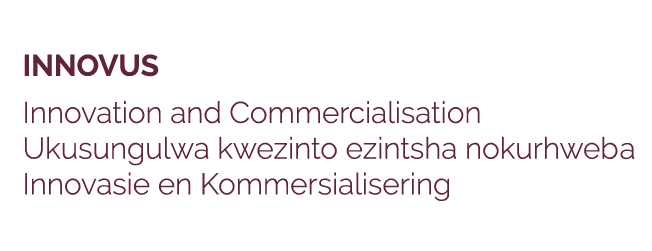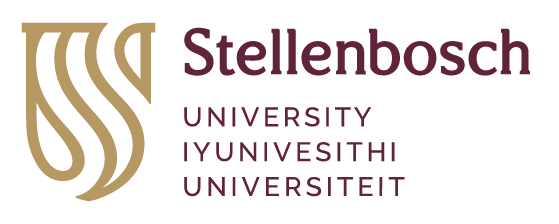With so many exceptional people in and around our University, we have become used to seeing the development many amazing innovations. But when our different faculties bring their disparate skills into focus on a singular problem, the solution is always amplified tenfold. This is the case with Professor Pretorius and Professor Perold, who are working together to speed up the diagnosis of Alzheimer’s, Parkinson’s and cancer.
We have previously featured separate stories on the brilliance of both Prof Willie Perold, who built a hardy, low-cost and flexible range of nanosensors, and Dr Resia Pretorius, who is looking at inflammatory biomarkers as a way of detecting inflammation-related illnesses.
What the two have been doing separately has been revolutionary in terms of the detection of life-threatening maladies, and means that more South Africans can be diagnosed and treated efficiently, which dramatically increases their chance of survival, regardless of their medical aid plans.
But, what the two are doing together may have an even greater impact.
First, let us take a look at their separate paths, and specialities. On the medical side, Resia realised that difficult-to-diagnose inflammatory illnesses like Parkinson’s, Alzheimer’s and cancers cause the body to release a particular biomarker - serum amyloid A - into the bloodstream. When this inflammation occurs our blood’s platelets distort, too, releasing another series of biomarkers. ‘Autophagy’, which literally means ‘self-eating’ is the process by which our cells renew themselves, cleansing our bodies, and it’s happening constantly. However, it’s a balanced process – too much ‘self-eating’ and you’re looking at cancer, and too little is indicative of Alzheimer’s. Both of these processes, too, release biomarkers, detectable by a pathologist.
So, while you can’t easily detect the diseases themselves, you can easily find their footprints across our body, and Resia is making huge strides in tracking them.
Willie, of the SU Electrical and Electronic Engineering department, has been working with his team to develop a series of resistive nanosensors, that can detect bacteria in small samples of body fluids. The idea is fairly simple: a mesh is created using electrospun nanofibers, treated with a specific biomarker, and made conductive so that the application of a sample to it, with a matching biomarker, causes the resistance to change measurably. Essentially, they can tell you, in a few minutes, whether or not a specific pathogen is present in your blood. They can even what kind of infection you have – viral or bacterial. They’re easy to replicate, inexpensive, incredibly accurate very, very adaptable in their application.
Together, they are using Willie’s technology to detect Resia’s biomarkers. These nano-biosensors can detect trace amounts of serum amyloid a (previously only detectable by mass spectrometry), meaning that cancers and Alzheimer’s can be diagnosed before their symptoms appear, while there is still ample time to do something about it. They can also detect the concentration of the biomarker, which will let us know the progression of the disease, and what stage the patient is at. Because different cancers cause the body to release different biomarkers, the biosensors can be used to diagnose them more accurately, before you get anywhere near an oncologist.
This solution many other applications. For instance, if you want to check how effective a particular cancer drug is, in a particular patient, before administering it, you can apply the drug to a sample of their blood, and check the concentration readings before and after application. This will remove much of the trial and error, so the patient can quickly be prescribed the medication that works for them. Do you want to make sure that a patient is actually taking the medication prescribed (it does happen)? Resia and Willie’s innovations can use a similar process to test for that, too.
As beneficial as this innovation is, what really makes me excited is how easy the system is to use, anywhere. Bypassing the path of the pathologists, the nan-biosensors can be fitted into a small, portable device, that can let anyone know, regardless of their training, whether something nefarious is present in anyone’s blood, or not. At a fraction of the cost and the time. ¬¬If you want to test for something different, you can simply switch out the nano-biosensor for a different one in seconds, and retest the sample. This can be done in the field so rural areas and poor municipalities can experience the same benefits of early detection as everyone else. This device will soon be able to send information straight through to licensed medical doctors, and the cloud, for further study and treatment.
They’ve also successfully tested paper (yes, normal, printable paper) as a replacement for the electrospun nanofiber, with great success. Willie and his team can achieve the same results with an old, modified inkjet printer, which prints transistors out of liquid, conductive nanoparticles.
Can you imagine how different the world will look when cancers can be diagnosed before the patient even knows they’re at risk? We all know how important time is when it comes to treating cancer and Alzheimer’s and, with years added to a patient’s treatment, you can add decades to their lives. And, due to the simplicity and cost-effectiveness of the innovation, it can be used to screen our population almost en masse.
Cancers and other deadly inflammatory diseases will be fought with cutting edge medication. But that fight can only start when we know where the problem is, and what it looks like. With Resia, Willie and their teams leading the charge, the tide may finally be turning.
Innovus, Stellenbosch University
|
15 De Beer Street
Stellenbosch
7600
South Africa
|
PO Box 3135
Matieland
7602
South Africa
|
|
t +27 (0) 21 808 3826
e info@innovus.co.za
e forms@sun.ac.za |

